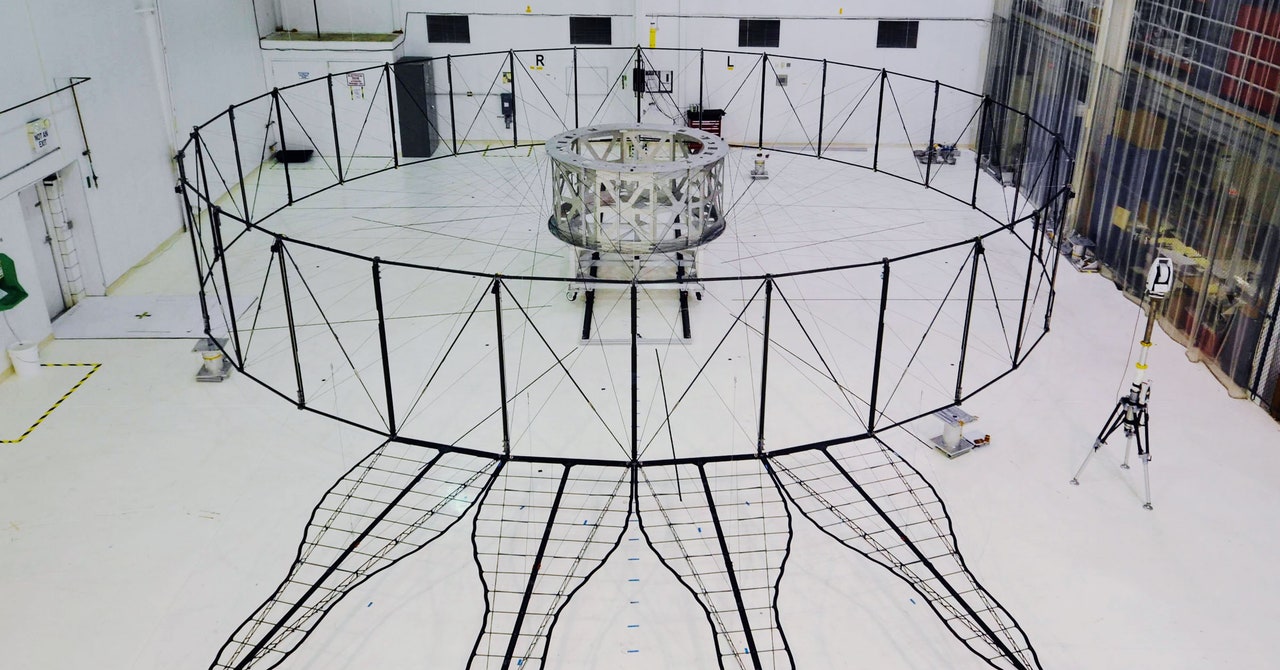
The HabEx team has proposed a 4-meter telescope paired with a coronagraph and a star shade 52 meters in diameter. (“Having both a belt and suspenders is good,” says Bertrand Mennesson, a NASA JPL principal scientist and the HabEx co-chair.) Beyond providing the potential for 10-10 suppression, a star shade could image a wide bandwidth of light spectra, checking for ozone, oxygen, and water vapor wavelengths in a single image. (LUVOIR’s coronagraph would need to take many images to capture the entire light spectrum for clues of those features.) It might also allow imaging of an exoplanet at a smaller separation from its host star, helping to catch planets that are “hiding” closer in orbit to their suns.
Yet a star shade, which must fly separately from the telescope, poses some challenges that a coronagraph doesn’t. The need for a separate power source would limit the uses of the craft to around 100 observations or so before it would need to be scrapped or refueled. It would also require the two crafts to engage in a delicate, coordinated flight.
And then, of course, there is the matter of it unfurling like origami. Arya and others have been working on that task, crafting several large-scale test star shades made from blanket-like Kapton polymer sheets and an unfolding carbon fiber frame. (The “blanket” is made of many layers of Kapton so that any holes punched in the shade by micro-meteorite strikes won’t compromise its shadow.) It’s not easy. The edge of a star shade’s petals must be extremely sharp to reflect as little sunlight as possible into the telescope, and any perturbations could affect exoplanet imaging. “We are creating an optical precision structure that must fold and unfold robotically, and that presents a lot of challenges,” Arya says. “We’re approaching these problems stepwise, and there’s still a list of things yet to be done to prove out this technology.”
Perhaps because the task at hand is so difficult, some astrophysicists believe a coronagraph plus a star shade could be the perfect one-two punch. “I really see the benefit of a hybrid system,” says Mennesson. Repointing from star to star, a coronagraph could image a wide number of potentially habitable exoplanets, then a star shade could provide a high-resolution look with a wide bandwidth and throughput of each planet’s light—great for a deep characterization of its habitability. The HabEx and LUVOIR teams have worked closely together, and any future teams will likely draw from their members.
Star shades may also be useful for more than deep space missions. NASA has given Mather’s team funding to study using an orbiting star shade to spot exoplanets from Earth. ORCAS, or Orbiting Configurable Artificial Star, would be the first hybrid ground-space observatory, using a laser beacon in space to help focus a terrestrial telescope, therefore cutting out the distortion caused by looking through the atmosphere. The next step in the proposal would see a 100-meter “RemoteOcculter” star shade in near-Earth orbit, where it would cast its shadow onto the telescope. “The orbiting star shade is much harder, but it could be the ultimate exoplanet observing system,” Mather wrote in an email. “Using it, we could see an Earth orbiting a nearby star in a one-minute exposure, and in an hour we could know if it has water and oxygen like ours.”
A decision on which of these projects will go forward is still many years out. Direction for HabEx and LUVOIR might come during a NASA Town Hall at the American Astronomical Society meeting on January 11, and the ORCAS and RemoteOcculter mission proposals are still being studied. But the James Webb Space Telescope, which launched in December, will soon be beaming back images made with the help of its lower-contrast star shade. That telescope will become fully operational in mid-2022, and it is expected to be the new leader in the exoplanet hunt—until even more powerful shade-throwers come along.
More Great WIRED Stories


